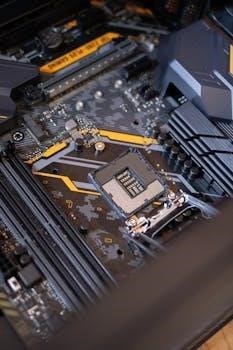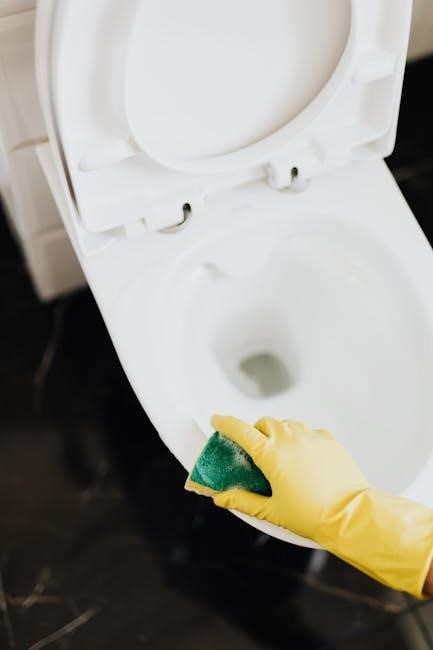A systematic head-to-toe assessment is a crucial nursing skill. It allows nurses to gather comprehensive patient data. This assessment is key for identifying health issues, and ensuring patient safety. It provides a structured method for evaluation.
Purpose of Head-to-Toe Assessment
The primary goal of a head-to-toe assessment is to establish a baseline understanding of a patient’s current health status. It enables nurses to systematically evaluate each body system, identifying any abnormalities or deviations from the norm. This thorough examination allows for the early detection of potential health problems and facilitates timely intervention. The assessment provides vital information to monitor changes in a patient’s condition, assessing the effectiveness of treatment plans, and adjusting interventions as needed. By following a structured approach, nurses minimize the risk of overlooking critical findings, ensuring a holistic and accurate patient evaluation. This process supports informed decision-making, contributing to improved patient outcomes and overall quality of care. Furthermore, it aids in creating a comprehensive record of the patient’s health, which can be crucial for continuity of care and communication among healthcare professionals.
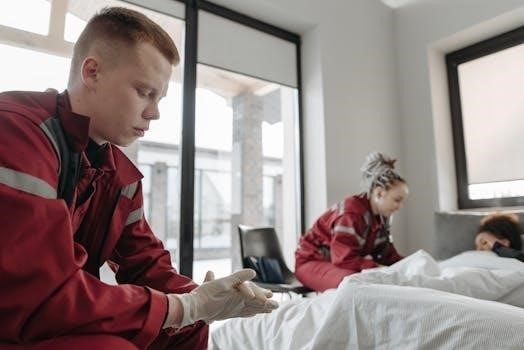
Essential Components of a Head-to-Toe Assessment
A comprehensive assessment includes mental status, skin evaluation, and cardiovascular checks. Respiratory and gastrointestinal systems are also crucial. These components ensure a holistic patient evaluation;
Mental Status and Neurological Assessment
This part of the assessment evaluates a patient’s cognitive function, level of consciousness, and neurological responses. Begin by noting the patient’s general appearance, speech patterns, and orientation to person, place, and time. Assess their ability to follow instructions and their memory recall. Check for any signs of confusion, lethargy, or agitation. Evaluate the patient’s speech for clarity and coherence, noting any slurring or difficulty forming words. Assess pupil size, equality, and reaction to light. Note any abnormal eye movements or visual disturbances. Evaluate the patient’s response to stimuli. Observe for any involuntary movements, tremors, or weakness. Assess the patient’s overall behavior and emotional state. This careful evaluation provides insight into the patient’s neurological health and mental status. By observing, carefully, and noting, healthcare providers can evaluate the mental status of the patient. These steps help with the early detection of mental or neurological problems. This detailed assessment is vital in the overall patient evaluation process.
Skin and Mucous Membrane Examination
This examination is crucial for identifying signs of systemic issues. Begin by inspecting the skin for color variations, noting any pallor, cyanosis, jaundice, or flushing. Evaluate the skin’s moisture level, and texture, and temperature. Palpate the skin to assess its temperature, noting if it feels warm, cool, or clammy. Inspect for any lesions, rashes, bruises, or areas of pressure. Pay close attention to pressure points, looking for any signs of breakdown. Check for edema, noting its location and severity. Examine mucous membranes, including the lips, gums, and inside of the mouth, for color, moisture, and any lesions. Note if the mucous membranes appear dry, pale, or inflamed. Assess the condition of the nails, noting color, shape, and any abnormalities. The skin assessment offers vital clues to the patient’s hydration status, circulation, and overall health. Careful observation and palpation are essential to detect early signs of skin and mucous membrane problems. This thorough assessment provides valuable data for the patient’s care plan. This process helps ensure the health of the patient.
Cardiovascular Assessment
The cardiovascular assessment focuses on the heart and blood vessels. It begins with checking the radial and pedal pulses, noting their presence, rate, rhythm, and strength. Assess if pulses are palpable bilaterally and if they are equal in strength. Note any irregularities, such as a weak or bounding pulse. Observe the skin for signs of adequate circulation, such as color, temperature, and moisture. Assess the capillary refill time in the nail beds, which can indicate peripheral circulation. Inspect for any edema in the extremities, noting its location, extent, and pitting. Listen to heart sounds using a stethoscope, identifying normal sounds (S1 and S2) and any abnormal sounds (murmurs, gallops). Assess for any jugular vein distention, which can indicate fluid overload or heart failure. Evaluate for any chest pain or discomfort the patient may be experiencing. This cardiovascular assessment will give the nurse important information about the patient’s cardiac function and perfusion status. It provides a clear view of the patient’s condition. Careful attention to these details is crucial for patient care.
Respiratory Assessment
The respiratory assessment evaluates the patient’s breathing patterns and lung function. Begin by observing the rate, rhythm, and depth of respirations. Note if the breathing is labored, shallow, or deep. Observe the chest movement, noting any asymmetry or use of accessory muscles. Inspect the chest for any deformities or signs of respiratory distress, such as retractions or nasal flaring. Auscultate lung sounds using a stethoscope, listening for normal breath sounds (vesicular, bronchial, bronchovesicular) and any abnormal sounds (wheezes, crackles, rhonchi). Assess the presence of a cough, noting if it’s productive or non-productive, and the color and consistency of any sputum. Palpate the chest for any tenderness or crepitus. Evaluate the patient’s oxygen saturation using a pulse oximeter. Determine if the patient has any complaints of shortness of breath or difficulty breathing. The respiratory assessment gives the nurse important information about the patient’s oxygenation status. The process needs careful observation and evaluation. It is an essential part of the head-to-toe assessment. This thorough approach will help identify potential respiratory issues.
Gastrointestinal Assessment
The gastrointestinal (GI) assessment focuses on the patient’s digestive system. Begin by inspecting the abdomen for any distention, scars, or visible pulsations. Auscultate bowel sounds in all four quadrants, noting their presence, frequency, and character (normal, hyperactive, hypoactive, or absent). Percuss the abdomen to assess for tympany (air) or dullness (fluid or masses). Palpate the abdomen lightly, noting any tenderness, rigidity, or masses. Ask the patient about their appetite, any nausea or vomiting, and their usual bowel habits (frequency, consistency, and color of stools). Inquire about any abdominal pain or discomfort. Assess the patient’s nutritional status, noting any weight loss or gain. Inspect the patient’s mouth for lesions or abnormalities. Check for any difficulties with swallowing. Document any pertinent findings. This assessment provides information about the patient’s digestive system. This step is vital in a comprehensive health evaluation. This thorough evaluation helps identify any underlying GI problems. It also aids in planning and delivering effective care. Remember to approach this assessment in a systematic way.
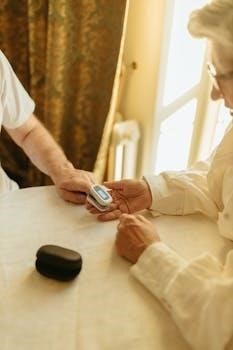
Detailed Examination Techniques
The head-to-toe assessment utilizes specific techniques. These include inspection, palpation, and auscultation. These methods provide crucial information about a patient’s health. Each technique is vital for accurate data collection.
Inspection Techniques
Inspection is the initial step in a thorough head-to-toe assessment. It involves the careful visual examination of the patient. Nurses use their eyes to observe various aspects of the patient’s physical condition. This includes observing skin color for pallor, cyanosis, jaundice, or flushing. The nurse inspects for any lesions, bruises, or rashes that might indicate underlying issues. The distribution and characteristics of hair are also noted during the inspection. Additionally, they observe the patient’s overall hygiene and grooming. This offers insights into their self-care ability. Assessing the patient’s posture and body symmetry is also part of the inspection. This can reveal musculoskeletal problems or neurological deficits. The nurse checks for any visible signs of edema or swelling. Observing the patient’s behavior and general appearance is a crucial part of the inspection process. This provides an overview of the patient’s general health and well-being. It’s a non-invasive way to gather essential data.
Palpation Techniques
Palpation is a crucial hands-on technique in a head-to-toe assessment. It involves using the sense of touch to assess various aspects of the patient’s body. During palpation, nurses assess skin temperature, moisture, and texture. They also palpate for any areas of tenderness or masses. Palpation is used to check for the presence of edema. This is done by gently pressing on the skin and noting any indentations. Nurses use palpation to assess pulse characteristics, noting rate, rhythm, and strength. The abdomen is palpated for organ size, tenderness, and any masses. Palpation is used to check for lymph node enlargement. Nurses palpate the sinuses to check for tenderness. They also check the nose and septum for any abnormalities. It is important to approach the patient with a gentle and professional manner. Palpation is essential for gathering data about the patient’s condition. This is done by combining the sense of touch with clinical knowledge. It helps the nurse to identify areas of concern.

Using a Checklist for Head-to-Toe Assessment
A checklist ensures all areas are assessed systematically. It helps nurses avoid omissions and maintain consistency. Using a checklist also improves efficiency and accuracy during assessment. This is vital for patient care.
Importance of a Systematic Approach
A systematic approach in a head-to-toe assessment is paramount for thorough patient evaluation. This structured method ensures that no critical body system is overlooked, promoting comprehensive data collection. By following a specific order, nurses can efficiently gather information, minimizing the risk of missing important findings that could impact patient care. A systematic approach also facilitates consistency in assessments, allowing for accurate tracking of changes in a patient’s condition over time. This structured approach enhances the nurse’s ability to identify early signs of deterioration or improvement, leading to timely interventions. Furthermore, a consistent methodology supports clear and concise documentation, contributing to effective communication within the healthcare team. It also aids in the organization of gathered data, which is useful in the overall care plan. The use of a defined sequence of examination techniques provides a framework that improves the quality and reliability of nursing assessments. This method helps in maintaining professionalism and building patient confidence in the care provided. Lastly, it reduces the possibility of bias and improves the ability of nurses to analyze patient data effectively.
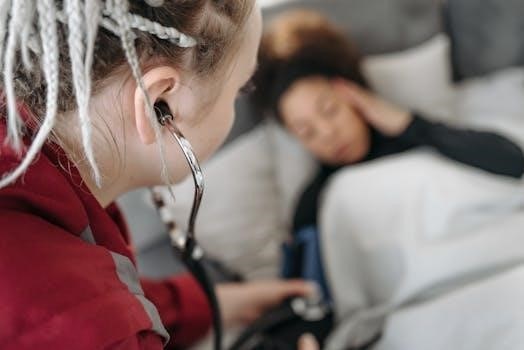
Documentation and Completion
Accurate documentation is essential after completing a head-to-toe assessment. Detailed records ensure continuity of care and provide a legal account of the patient’s condition. Document all findings, including both normal and abnormal results, using specific and objective terminology. Avoid vague terms. Record the assessment in a timely manner, ideally immediately after completion, to preserve accuracy. Note any changes in the patient’s status and the interventions provided based on your findings. Always follow your institution’s guidelines for documentation. Use approved abbreviations and medical terminology. Include the date, time, and your signature for verification. Be sure your documentation is clear, concise, and easy for other healthcare professionals to understand. Proper documentation facilitates effective communication and collaboration among the healthcare team. It also supports informed decision-making. Complete all sections of the assessment form to ensure a thorough record. This ensures that no aspect of the patient’s condition is missed. Always maintain patient confidentiality when documenting information. A well-documented assessment is a crucial part of providing safe and effective patient care.


